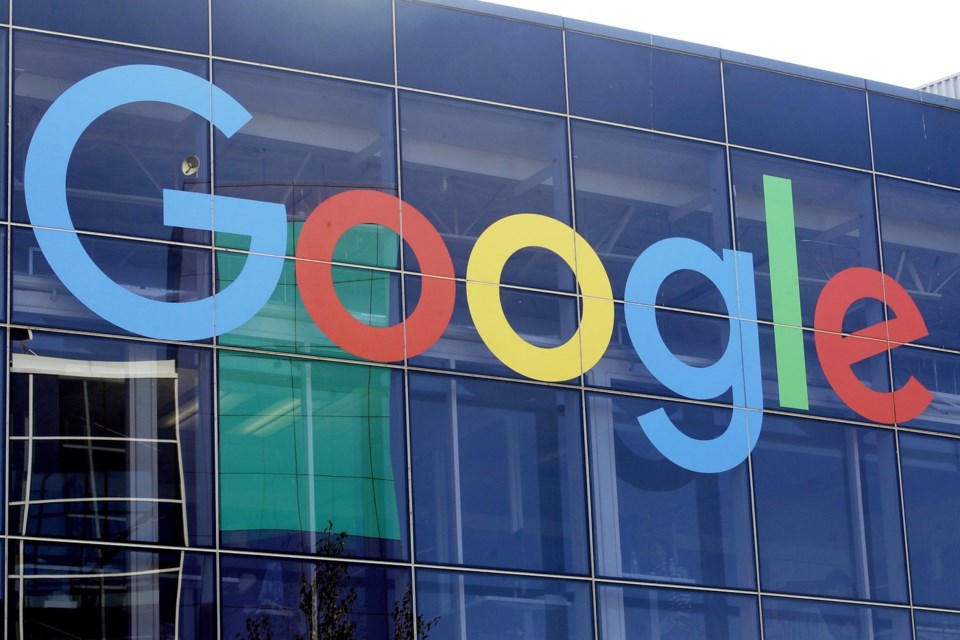Guido Mieth To our clients & friends: For the first quarter of the year ended March 31, 2025, the Giverny Capital Asset Management (“GCAM”) model portfolio performed as follows:[1] GCAM Performance Quarter ended One-year ended Three years ended *Annualized Since Inception 3/31/2025 3/31/2025 3/31/2025 3/31/2025 Portfolio Return - Net -3.39% 1.75% 8.
37% 17.33% S&P 500 TR -4.27% 8.

25% 9.06% 18.59% Excess Return - Net 0.
88% -6.50% -0.69% -1.
26% * Inception Date 4/01/2020 Click to enlarge I had a nice introduction written about this quarter marking our fifth anniversary in business and what a gratifying stretch it has been, etc., but then President Donald J. Trump declared war on global trade on April 2, provoking a violent reaction in the markets.
So, I then wrote a different letter. Then, on April 9th, Trump changed his mind, tabling the tariffs for 90 days. No doubt more curves and swerves are coming, but it appears the era of free trade is ending.
I think investors need to be ready for an uncertain transition to whatever comes next. The markets certainly did not like what they heard on April 2, with both stock and bond prices swooning for a week. Since Trump hit the pause button, markets have rebounded a bit.
We don’t make a practice of providing mid-quarter updates, but this is an unusual time. So: after a chaotic couple of weeks, the S&P 500 was down 7.74% for the year as of the market close on April 14.
Our GCAM portfolio was down 5.58% for the same period, net of fees. During downturns, it is worth remembering that we do not own lottery tickets.
We own shares of outstanding companies, nearly all of which have strong competitive positions, long histories of sustained growth and capable management teams. In the short run, their stock prices may gyrate wildly. In the long run, their valuations will be determined by the durability of their earnings growth.
Just because the market quotes an awful price for our shares on a given day does not mean we have to sell on that day. As usual, Warren Buffett and Charlie Munger are most helpful on this topic. Thanks to investor Jonathon Luft for recently circulating this excerpt from Berkshire Hathaway’s 1987 shareholder letter: Charlie and I let our marketable equities tell us by their operating results – not by their daily, or even yearly, price quotations – whether our investments are successful.
The market may ignore business success for a while but eventually will confirm it. As Ben (Graham) said: “In the short run, the market is a voting machine but in the long run it is a weighing machine.” The speed at which a business’s success is recognized, furthermore, is not that important as long as the company’s intrinsic value is increasing at a satisfactory rate.
In fact, delayed recognition can be an advantage: It may give us the chance to buy more of a good thing at a bargain price. Nobody wants to live through a hurricane, but if one is coming, I believe we have a well-built home. Five of our 10 largest holdings – Alphabet ( GOOGL ), Arista Networks ( ANET ), Meta ( META ), Berkshire Hathaway ( BRK.
A )( BRK.B ) and Medpace ( MEDP ), together about 30% of our invested dollars – have substantial net cash positions, which may allow them to take advantage of the current uncertainty by buying good assets cheaply, including their own stock while it is discounted. Most of the rest of our portfolio companies carry modest amounts of debt relative to their cash flows.
In flush periods, when capital is plentiful, strong balance sheets may seem defensive. In a storm, the balance sheet can become an offensive weapon. All that said, the past two weeks have been deeply frustrating because this crisis is self-inflicted.
In a way, that’s good because the damage could be reversed quickly, as we glimpsed on April 9. President Trump has surrounded himself with people who rarely challenge him, but the stock and bond markets spoke the truth: his tariff plan is awful. The president would like to see more factories built in the United States to produce more of what Americans consume.
A noble goal. But the North American supply chain in autos, to pick one example, was built over decades and can’t be recreated overnight to conform to a politician’s desires. Rather than create long-term economic incentives to bring manufacturing jobs back to America or target the most abusive violators of free trade agreements – perhaps countries that steal US intellectual property and close their markets to US goods? – he implemented tariffs against our allies and closest trading partners.
The logic that all trade deficits are bad is non-sensical. If the US runs trade deficits with Central American countries because we buy a lot of cheap bananas, coffee and sugar produced by subsistence level workers, and they buy very little from us, because their economies are small and poor, are Americans worse off? Would it be better if our citizens were harvesting bananas in Florida? Making cheap shoes in the Carolinas? Considerable damage has been done in just two weeks, even as Trump pressed the pause button. While a more thoughtful strategy for reshoring production may emerge, if the US does exit global trade agreements, I believe our country will not be able to build capacity fast enough, or efficiently enough, to avoid rising prices for all manner of goods.
That, in turn, would likely lead to a weaker economy and lower corporate profits. Because stock prices are driven over time by profit growth, the current tariff plan probably would translate to a less robust stock market. Moving to a recap of the first quarter, we had a busy stretch by our standards, establishing three new positions and exiting two, plus assorted additions and trims to existing holdings.
We sold our smallest holding, Lumine ( OTCPK:LMGIF ), a small vertical market software business spun off from Constellation Software ( OTCPK:CNSWF ) and still controlled by it. We’ve had trouble getting too excited about these spins from the mothership, as we previously sold Topicus ( OTCPK:TOITF ), another Constellation-owned business. These spinoffs tend to be nice businesses, but tiny and illiquid.
Plus, Constellation continues to control the business economics and voting rights. It makes more sense for us to concentrate our research focus on Constellation. We also exited Five Below ( FIVE ), our lamented value retailer.
Five Below has one of the better retail store models I have ever seen. Unfortunately, prior management decided to move away from a successful value proposition where all merchandise in the store was priced below $5, and to introduce higher-priced items. I wasn’t skeptical enough of this move.
Customers walk into Five Below expecting to find fun and interesting low-priced items, not $20 roll-aboard suitcases. On a simple level, when you sell trendy $2 and $3 items to kids, there is not much competition. When you start selling $15 and $20 items to adults, you find yourself competing with Walmart and Target.
That’s a harder game to play. Five Below was also hurt by shoplifting losses after some cities stopped policing petty crime. CEO Joel Anderson left abruptly last summer and I waited to see who would replace him.
Unfortunately, the new CEO previously led two retailers that ended up in bankruptcy shortly after her departure. In our research, she did not garner strong reviews from former colleagues. On top of this, it was clear to us that Five Below would be hurt by plans to heavily tax Chinese-made imports.
We did not foresee the extreme level of tariffs that were announced, but we did suspect China would be hit hard. We exited at a terrible price but not as terrible as the current price: about $86 vs. recent quotes in the mid-$60s.
We trimmed Carmax ( KMX ) during the quarter – it has been a rough few years for the used car retailer. I believe the customer friendly business model remains attractive, but a lot of Wall Street capital has flowed to Carvana ( CVNA ), creating a more difficult competitive environment. In early April, Carmax reported encouraging operating results.
Yet despite heavy investment in online selling capabilities, Carmax is not gaining market share. We adjusted the position size to acknowledge that fact. We trimmed Progressive ( PGR ) after a big run-up in the stock price.
As of March 31st, Progressive was up 273% since our inception five years ago, including 17% in the first quarter (vs. -4.3% for the Index).
Progressive remains a top five holding. With the proceeds from those sales plus cash in hand, we allocated roughly 10% of our capital into three new holdings and three small additions. In December and into the first quarter, we bought a small position in TWFG ( TWFG ), which essentially is a technology and business support platform for independent insurance agents.
The position is small mainly because TWFG itself is small and illiquid, as founder CEO Richard F. “Gordy” Bunch owns about 60% of the stock. Bunch himself is a former insurance agent who saw an opportunity to create a platform where independent insurance agents selling personal lines (mostly auto and homeowners) could easily access quotes from dozens of insurers and receive back-office support, in exchange for 20% of their commissions.
If the platform works well, the agent becomes more than 20% more productive while offering clients better coverage options. In personal lines insurance, large companies like Allstate ( ALL ) and State Farm employ armies of so-called captive agents, who sell policies only for them. In my opinion, that model is no longer tenable for agents.
For one, climate change has rocked the industry. Large insurers may no longer wish to write as many (or any) homeowners’ policies in coastal states, or tornado-prone states, or wildfire zones. Non-renewing policies may be the right economic decision for the insurer, but it means agents lose their book of business, which they typically spend decades building.
A better solution for an agent is to be independent and thus loyal to the client rather than to the carrier. Independent agents also have more control over their business when they wish to sell at retirement; they are not beholden to the goodwill of one insurer. As a client service issue, agents are better off showing multiple coverage options to clients, rather than offering one company’s terms on a ‘take it or leave it’ basis.
I believe Bunch has built a good platform for independent agents and can grow TWFG for years. Our basis is a bit over $29. In March, we built a position Aaon Inc.
( AAON ), an Oklahoma-based manufacturer of semi-custom heating, ventilation and air conditioning (HVAC) systems for commercial buildings. We’ve been following Aaon for some time, and pounced after an earnings miss caused the stock to plunge. Aaon’s HVAC solutions are popular with schools, shopping centers and other commercial customers with demanding air conditioning needs.
Aaon equipment is configurable, whereas most of the giant HVAC brands like Carrier, Lennox ( LII ) and Trane ( TT ) mass-produce units. Historically, Aaon’s semi-custom units cost about 20% more than mass-produced units, but deliver lower energy bills over their lifetime. A significant regulatory change mandating the use of more energy-efficient refrigerant came into effect at the end of 2024.
Aaon says it benefited from the rule changes and can now produce HVAC systems for only 5%-10% more than standard units. Narrowing the price gap for new equipment should help it accelerate growth from already high levels: earnings per share tripled from 2019 through 2024. Aaon also has a large division that supplies specialized liquid cooling solutions to data centers, where millions of dollars of computer chips cannot overheat for even a minute.
This division, BASX, has an enormous backlog and should grow for years. Our basis in the stock is a little over $79 per share. At the end of the quarter, we established a position in Builders FirstSource ( BLDR ), a building products distributor.
We bought stock around $126 per share, while Wall Street analysts believe the company should earn nearly $10 per share this year. That feels like a good price for a company of this caliber. Builders is a key support system for the nation’s homebuilders.
It carries a wide range of products like lumber, millwork, windows and prefabricated components. Increasingly, it provides homebuilders with value-added services that help them build homes with less labor. For example, Builders can frame walls of a home at a central location and deliver panels to a job site for quick assembly.
This reduces both labor and lumber waste on the job site and improves the home’s structural integrity. The US is likely to have long-term shortages of construction labor, so this off-site assembly creates considerable value and should become a common way to fabricate homes. Builders is by far the largest value-added distributor with 590 branches around the country.
It has procurement clout with lumber mills and others, and the sprawling branch network means it usually has lower freight costs to deliver materials to a job site. For good measure, the management team has allocated capital very well over time. Since 2021, Builders has reduced its share count from 204 million to 116 million, while maintaining modest amounts of debt.
There is considerable pent-up demand for new homes in the US, but also considerable obstacles to building more homes. These include high interest rates, rising costs of zoning, permitting, labor and construction materials, and political reluctance to incentivize construction of affordable housing in cities. I am not especially confident new home starts are going to spike upwards any time soon.
But I am confident that when building does pick up, Builders’ earnings power is far beyond the current $10 per share. It earned nearly $17 per share as recently as 2022. During the quarter, we added modestly to our holding in Arista Networks after a substantial drop in its stock price.
Arista makes high-end computer networking equipment used in hyperscale cloud computing and Artificial Intelligence data centers. Arista’s stock price rose roughly 10 times from our inception in April 2020 through January, but subsequently has been cut by about 40%. This is mainly due to skepticism about whether AI data centers can generate good enough economic returns to justify a multi-year build-out.
We added to existing positions in Medpace and Kinsale ( KNSL ), both of which are now among our top 10 holdings. Medpace is a clinical research organization that helps emerging biopharma companies conduct trials on new compounds. I believe it is a world-class company with a great founder-CEO in August Troendle, but the current Food & Drug Administration leadership appears hostile to drug research.
Medpace may see its growth slow for a time. Easing our pain somewhat, the company has a large cash position and a history of buying back its own stock during periods of weakness. I’ve written about Kinsale at length in prior letters (all of which are available on our www.
givernycam.com website) but as a reminder, it writes so-called excess and surplus lines of insurance, which are less regulated coverages often offered to small businesses. Kinsale has a strong founder-CEO at the helm in Mike Kehoe, along with exceptional cost discipline, best-in-class technology and consistent underwriting results.
In sum, we were net buyers of stocks during the quarter, which seemed appropriate given the decline in prices in February and March but feels less timely given the events of April. We started the year with 6% in cash and finished March with 2.8% in cash.
I don’t think I add much value to your lives by writing about policymaking, but the current tariff drama may affect our investing lives together for years. The market has spoken and its message was clear: Trump’s tariff policies, if implemented, would not be good for the markets. Well-functioning capital markets depend on predictability and trust, which is buttressed by the even-handed enforcement of the law, including trade agreements.
We are seeing, in real time, an implosion of trust in the United States both internally and among our allies. If allowed to stand, this will create a less favorable investing environment for all of us. The good news is that a self-made crisis is one that can be fixed.
The US is blessed with the most dynamic private sector on the planet. If a smart academic drew up a list of the 300 best-performing public companies in the world, based on capital returns, sustainable growth rates and innovation, I suspect more than 200 of them would be American. Owning a basket of roughly two dozen of these high-functioning companies should prove rewarding over time.
I would also note that over the past five years, we’ve endured repeated bouts of skittishness in the stock market. The pandemic caused a temporary crash in 2020. Rising inflation and interest rates caused the market to decline 18% in 2022.
Silicon Valley Bank and First Republic Bank failed in early 2023, causing more upheaval. Now, the tariff imbroglio. Yet here we are, portfolios considerably larger in value after five years in business because we tolerated the volatility inherent to stock market investing.
We have survived bad policies before and probably will again. With every good wish, David M. Poppe Footnote [1] GCAM’s model portfolio is a Poppe family account (“portfolio”).
The portfolio does not pay an advisory fee, but the returns presented herein assume the deduction of an annual advisory fee of 1% to show what a client account’s performance would have been if it had been invested the same as the portfolio. The returns reflect reinvestment of dividends and other earnings. Past performance is not necessarily indicative of future results.
Important disclosures appear at the end of this letter. The S&P 500 Index returns include the reinvestment of dividends and other earnings. The Index is an unmanaged, capitalization-weighted Index of common stocks of 500 major US companies.
The Index does not incur expenses and is not available for investment. Disclosures The performance returns presented herein are those of a Poppe family account (the “Portfolio”) that serves as the model portfolio of Giverny Capital Asset Management LLC (“GCAM”). The Portfolio is managed in accordance with the investment strategy that GCAM employs for its client accounts; however, the performance of a client account may differ from that of the Portfolio due to account size, client-specific guidelines or restrictions, tax considerations, cash flows into and out of the account and timing of transactions and other factors.
Performance returns of the Portfolio as of the most recent quarter end can be found at www.givernycam.com/performance.
Past performance is not necessarily indicative of future results. Top 10 Holdings* – March 31, 2025 Constellation Software 7.9% Alphabet Class A & C 7.
8% Meta Platforms Class A 7.7% Arista Networks 7.6% Progressive Corp.
7.4% Charles Schwab 5.5% Heico Corp.
Class A 4.8% Kinsale 4.2% Berkshire Hathaway Class B 4.
0% Medpace 3.8% Total 60.7 % Click to enlarge * The holdings are those of the Portfolio as of the date indicated.
Client account holdings may differ from those of the Portfolio due to account size, client-specific guidelines or restrictions, tax considerations and other factors. The Portfolio’s holdings are subject to change and are not recommendations to buy or sell any security. The percentages are of total assets.
Top 10 holdings of the Portfolio as of the most recent quarter end can be found at www.givernycam.com/performance.
The views expressed herein are those of GCAM as of the date of this letter and are subject to change without notice. GCAM makes no representations or warranties regarding the completeness or accuracy of any information contained herein, and does not guarantee that any forecast, projection or opinion will be realized. This letter is presented for informational purposes only, and the information herein is not intended, and should not be construed, as investment advice or as an offer or recommendation to buy or sell any security.
All investments involve risk and may lose value. For a discussion of risks, see Item 8 of GCAM’s Form ADV Brochure. Certain statements herein are “forward-looking statements.
” Forward-looking statements are subject to risks, uncertainties and other factors that could cause actual results to differ materially from future results expressed or implied by such forward-looking statements. Readers should carefully consider such factors. Forward- looking statements speak only as of the date on which such statements are made; GCAM undertakes no obligation to update any forward-looking statements to reflect events or circumstances after the date of such statements.
Click to enlarge Original Post Editor's Note: The summary bullets for this article were chosen by Seeking Alpha editors. Editor's Note: This article discusses one or more securities that do not trade on a major U.S.
exchange. Please be aware of the risks associated with these stocks..
















